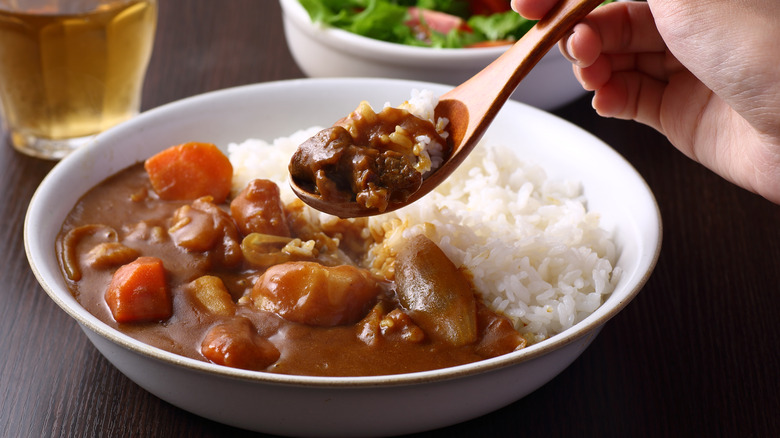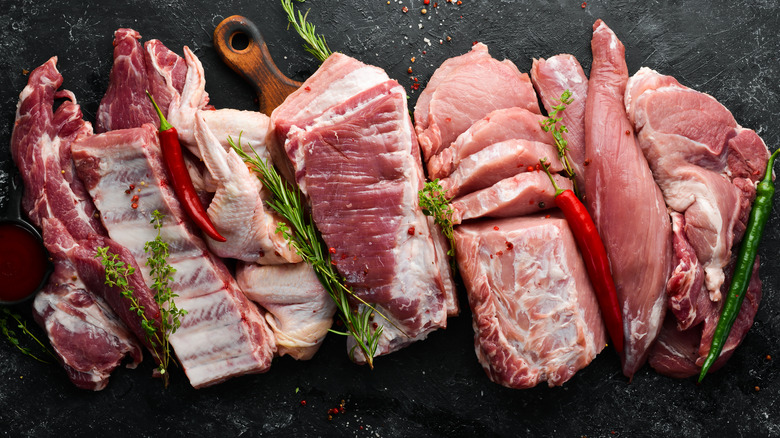What Is The Difference Between Japanese And Indian Curry?
When most Americans think of eating curry, they most likely are thinking of their favorite spicy dish from a local Indian restaurant. But depending on where you are in the world, "curry" is something very different, but no less popular.
The name "curry" is an Anglicized version of the Tamil word "kari," meaning "a sauce or relish for rice," and is not particularly defined by any specific recipe.
In Japan, rice curry is considered one of the country's national dishes and is served regularly in homes, schools, and on the country's Maritime Self-Defense Force ships (via The Japan Times).
According to The Japan Times, curry made its way to Japan from India in the 1850s and 1860s, when the country began trading with British sailors, and started appearing in recipe books and restaurants by the 1870s. However, since the recipes had gone through the middle man of the British Empire, the resulting Japanese dishes looked quite different from their Indian cousins.
A matter of texture
The most notable differences between Japanese curry and Indian curry are the color and texture. While Indian curries can vary widely in texture from thin and soup-like to very thick, Japanese curry is usually thicker and more like a gravy, due to its incorporation of flour or roux into the mixture (via Tastylicious).
Additionally, while Indian curries usually have a more yellow or orange hue from their use of spices, according to the Bangkok Chef, Japanese curries usually appear more brown, which is a result of the method used to make them.
When curry was brought to Japan it was in the form of curry powder, which was a combination of common Indian spices, mixed to approximate the taste of the sauces used in Indian cooking and sold to British colonists and sailors (via Curious Cuisinière).
This mix was combined with broth or oil and thickened to create sauce that was more like a gravy or stew than the traditional Indian dishes.
Because the Japanese dishes are made with curry powders and have been adapted to fit Japanese cultural tastes over the years, with the inclusion of fruits and other local ingredients, they are often considered to be less spicy and sweeter than their Indian counterparts, which lean heavily on vibrant spices including turmeric, cumin, and paprika. Japanese variations are described as hearty and peppery.
The meat of the issue
Another significant difference between Indian and Japanese curries is what they are served with. While both cultures will serve the sauces with rice and vegetables — often including potatoes, carrots, onions, or cauliflower as a starting point — the proteins that complement them vary.
In India, curries are usually served with chicken, fish, lamb, or as vegetarian dishes with lentils serving as the source of protein. While chicken and fish are also both found as options in Japan, curries are most commonly served there with pork or beef, the latter of which is never used in Indian dishes for cultural and religious reasons (via Umami Insider).
While it may have taken on many different forms over the years, as it made its way around the world, one thing is for certain: It's hard to find a wrong way to serve "sauce for rice" and wherever you eat it, it will probably be delicious.


